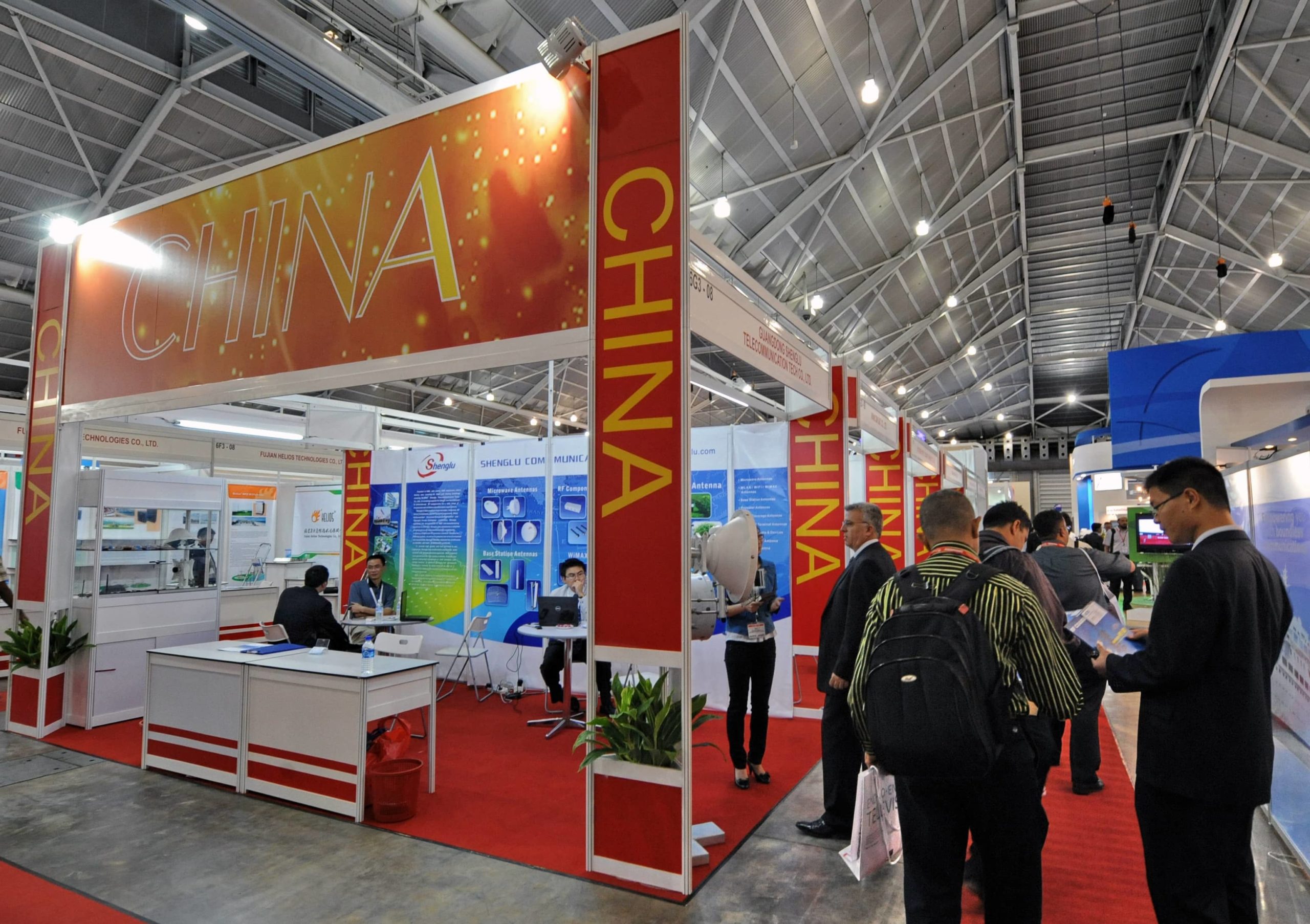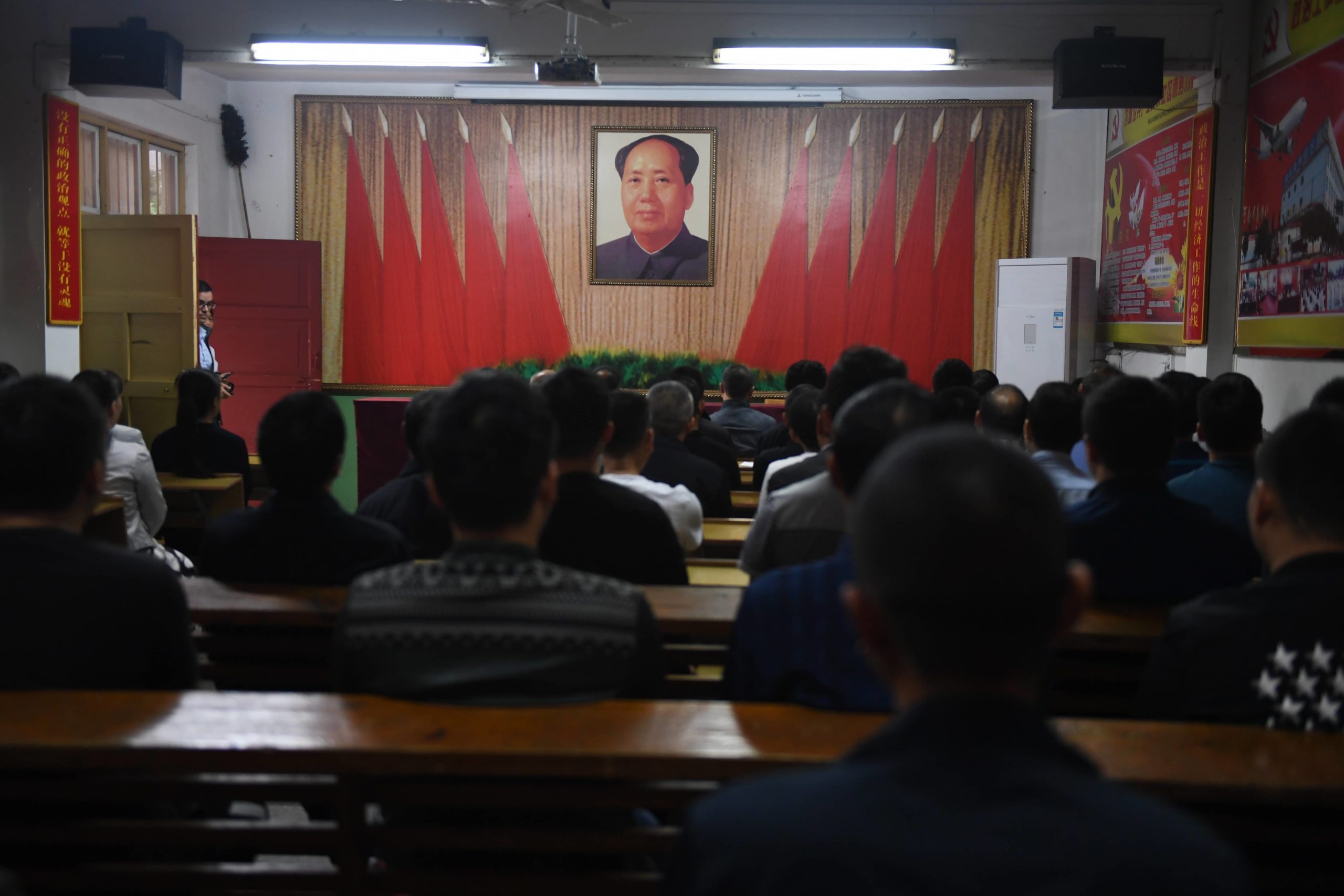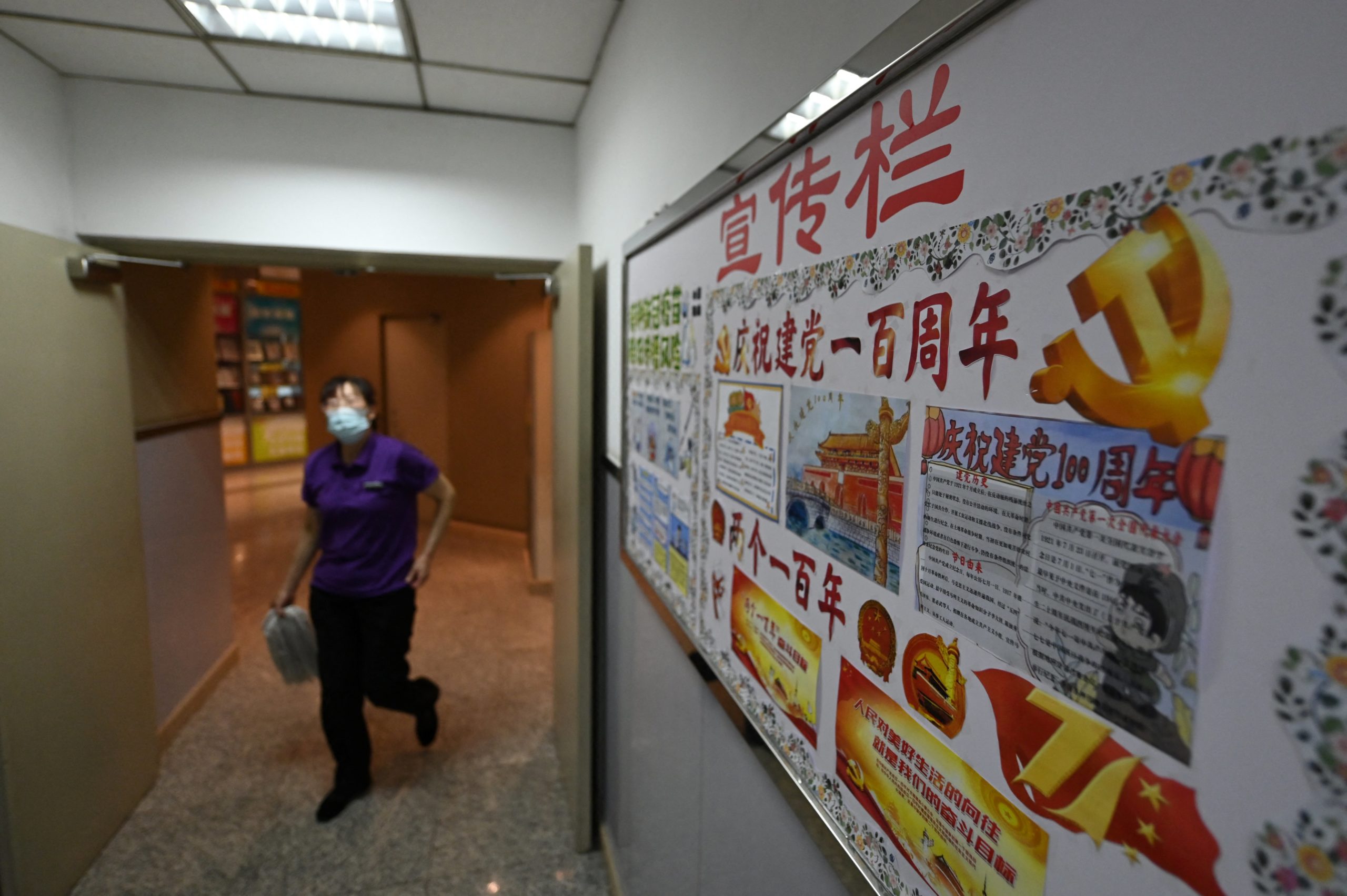Scott Kennedy and Ilaria Mazzocco
As China’s economy moved away from state planning and policymakers introduced market reforms in the 1980s and 1990s, many observers expected that in addition to promoting the growth of the Chinese economy, privatization would also have substantial political implications. Most importantly, it was thought that the rise of the private sector could lead to the establishment of an independent business class that would seek to defend its interests, both in the short term through greater policy lobbying and over the longer term by pushing for institutionalized political change, including democratization. The actual economic and political trajectory of China’s private sector has been more complicated and has been a central area of contestation for economic and political power between firms and the Chinese party-state. Although Chinese companies have pushed to have greater autonomy, they have also faced immense pressure to adapt and cede authority in order to survive and grow.
China’s private sector has grown dramatically over the past four decades. The vast majority of firms in China are now private, including smaller proprietorships and larger private enterprises (see Figure 1). Private firms are still somewhat smaller on average than their state-owned enterprise (SOE) counterparts, but many of them have grown quite sizeable, with some having joined the Global Fortune 500. Private firms also account for the vast majority of jobs (see Figure 2) and economic growth. One reason China has not achieved its potential growth rate in the last decade is because of greater support for far less efficient SOEs.
In the 1990s, private companies became more politically active, lobbying individually and in business associations. Some entrepreneurs joined local and national People’s Congresses and started engaging in philanthropy. Eventually, the Chinese Communist Party (CCP) recognized the growing importance of the private sector in the economy and society by officially affirming their economic and political value. The cornerstone of this shift was General Secretary Jiang Zemin’s doctrine of the “Three Represents,” first unveiled in 2000, which in part aimed to increase representation of private business executives in the CCP.
Over the following decade, the integration of the private sector into the country’s political establishment did help private firms gain a greater seat at the table. However, for the most part, private firms learned that they needed to adapt to the CCP rather than the other way around. More private entrepreneurs joined the legislature and the Chinese People’s Political Consultative Conference (CPPCC), an official advisory group. Private firms formed more partnerships with SOEs, offered shares in their firms to officials, and in other ways ingratiated themselves with the party-state and its leadership. And, of course, many private entrepreneurs have themselves been former officials. In the last several years, particularly under Xi Jinping’s rule, there has been an even greater attempt by the political leadership to increase their control over the private sector, reduce its political influence, and ensure its loyalty to the system. This has included expanding the reach of national security policies and regulations. For example, the adoption of the National Intelligence Law in 2017 requires all firms in China to accede to government demands to provide information and data as authorities deem necessary to protect China’s national security. It has also meant using carrots, such as providing industrial policy opportunities to private firms, and sticks, such as the regulatory crackdown on private Internet firms that started in late 2018 and recently concluded. Finally, the CCP has also stepped up efforts to directly influence the corporate governance of private firms, in some cases taking “golden shares” in companies, pushing private firms to form CCP branches (see Figure 3), and integrating firms into the burgeoning “corporate social credit system” (CSCS).
The assertive actions by the party-state raise a number of questions: How widespread are these various initiatives? How effective are these steps in giving the CCP greater actual control not only over SOEs but, more importantly, private firms, including their decisions over personnel, investment and their overseas activities? In short, how possible is it for Chinese private companies to be genuinely private, autonomous actors in today’s China?
Answering these questions has important implications for China’s economic and political trajectory as well as the country’s relationship with the rest of the world. The United States and other countries are faced with the difficult choice of having to decide whether to distinguish between Chinese private firms and SOEs in a wide range of regulatory circumstances, including listing on securities markets, the oversight of direct investments and the crafting and implementation of export controls for sensitive technologies.
The collaborative work of Professors Curtis Milhaupt (Stanford University) and Lauren Yu-Hsin Lin (City University of Hong Kong) is part of a wave of thoughtful new scholarship that tries to investigate the complexities at the heart of China’s corporate governance and the question of business autonomy. Their findings show that the party-state has indeed increased its efforts to gain greater control over the private sector and that in some ways these steps have blurred the line between private firms and SOEs. However, it is difficult to say how effective these measures have been, and rather than concluding that there are no differences between Chinese private firms and SOEs when developing regulation, it may still make more sense to pursue a careful case-by-case review.
This feature summarizes the work of Lin and Milhaupt, which examines why and how firms align with the CCP and the type of linkages they build with the system. One particularly new area of research concerns the emergence of the corporate social credit system (CSCS) as a mechanism for monitoring and control. The discussion concludes with a consideration of the policy implications of these developments for the United States and others.
 ROSLAN RAHMAN / Staff
ROSLAN RAHMAN / StaffWhen Do Firms Align with the Party?
As Professor Milhaupt has noted elsewhere, the nature of privatization in China’s political economy is such that the boundary between “state-owned” and “private” firms is often blurry. For example, the central government and local governments may hold minority or “special management” shares of companies that are officially registered as private, and they may gain effective control even by holding a small minority stake. Moreover, large private companies like Huawei may have an easier time accessing government support compared to smaller and less well-connected SOEs. And all firms, whether SOE or private, have similar incentives to seek protection and benefits from the party-state in an environment with weak rule of law such as China’s.
The feature presents findings from two studies by Lin and Milhaupt that explore these issues and some of the channels available to the party-state when it seeks to influence the business sector. The first is based on data documenting the effect of the “party-building” policy launched in 2015 as part of a broader effort to reform SOEs. The scholars searched the disclosure documents of all 3,446 non-financial A-share listed Chinese companies from January 2015 to December 2018 to identify which companies adopted party-building amendments to their charters (see Methodology box, below, for more details), which formalize the role of CCP branches inside companies among other things. Other measures are relatively symbolic, for example including a provision stating that the firm would follow the constitution of the CCP, but also far more significant ones like requiring the board or management to consult with the party committee before making decisions.
Based on the data they collected, roughly 30 percent of the firms analyzed in their study had introduced amendments four years into the policy (see Figure 4). The lack of universal adoption is not surprising since the policy was only aimed at SOEs. However, it is noteworthy that four years into this mandatory policy, 12 percent of central SOEs and 9 percent of local SOEs still had not made any changes to their charters. Moreover, about 6 percent of private companies introduced party-building charter amendments even though the policy was not directed at these firms. This points to the variation in firm preferences regardless of ownership type, and the ability of some SOEs to resist adherence to mandatory state policies.
When analyzing the characteristics of SOEs that did not make amendments, the scholars found that those more insulated from direct state control because of their ownership structure were less likely to adopt the party-building amendments to their charters (see Figure 5). Another factor associated with non-adoption was the presence of large external shareholders, which presumably helped counterbalance state pressure. Conversely, larger SOEs and those with more direct state ownership tended to be more likely to adopt the amendments.
Not all amendments are equal in their impact, and the study found significant variation in the types of changes made by firms, as shown in the breakdown by firm ownership, size, and size of state ownership in Figures 6a, 6b and 6c. Symbolic changes signaling fealty to the party were far more common compared to amendments affecting the actual internal governance and staffing, even in the case of SOEs.
 JADE GAO / Contributor
JADE GAO / ContributorPolitical Connections Matter to Private Enterprises
The data suggest that SOEs have been more responsive in adopting these amendments and that symbolic changes are more common than substantive ones. Nevertheless, private firms are not immune to these changing policy winds. As noted, the SOE reform package launched in 2015 did not target private firms. Lin and Milhaupt were unable to find any government documents mandating private firms to conform with the measures in the time period relevant to their study. Yet, despite the lack of a direct requirement, the scholars found that by the end of 2018, 6 percent of listed privately-owned firms had elected to follow the policy and make party-building amendments to their charters.
When looking at the breakdown of the specific amendments adopted, the scholars noted that most of the changes made by private firms were symbolic and did not directly affect decision-making or staffing. Symbolic amendments are presumably intended to signal political fealty without forcing firms to give up substantial autonomy.
The data indicates that those private companies that carried out the charter amendments were more likely to have political connections or even have the state as a formal shareholder. Lin and Milhaupt’s work on the Corporate Social Credit System further highlights how important political connections can be for private firms.
 AFP Contributor / Contributor
AFP Contributor / ContributorHow The Corporate Social Credit System Influences Firms
China’s Corporate Social Credit System (CSCS), originally launched in 2014, is a large-scale data aggregation initiative focused on promoting better “trustworthiness” by market actors, through better law enforcement and legal compliance and by using a system of positive and negative incentives. For example, companies can be placed on “blacklists” which restrict their market access (for example banning them from participating in government procurement bids), or “red lists” that are linked with economic incentives including fast-track access to credit. Overall, this ambitious system is expected to provide the Chinese party-state with significant leverage over companies.
To assess how political connections influenced Corporate Social Credit (CSC) scores, Lin and Milhaupt analyzed all publicly available scores on the Zhejiang Province government website as of July 1, 2021. Zhejiang, just south of Shanghai, is the province home to many of China’s most successful private companies and over 500 publicly listed firms. All 531 A-share listed companies headquartered in Zhejiang are in their sample. This includes both SOEs (15% of the total) and private firms (85%). For more information on their research methodology, please see the Methodology Box below. When analyzing the data, the scholars found that low overall scores were associated with higher levels of debt, which is to be expected since it indicates higher rates of default and nonperformance of other obligations such as court judgments and taxes. However, higher overall CSC scores were principally correlated with political connections. To measure political connections, Lin and Milhaupt identified firms whose director or CEO served in certain government or party positions at or above the rank of the division (chu) level. The only other significant variable was the size of the firm. Surprisingly, neither profitability nor the quality of corporate governance (proxied by the percentage of independent directors on the board) was associated with higher scores (see Figure 7). Nor did it matter whether a company was an SOE (as opposed to being private) or whether it had complied with party-building reforms.
Figure 7: Factors Determining Corporate Social Credit Scores
 NICOLAS ASFOURI / Contributor
NICOLAS ASFOURI / ContributorThe Political Incentives to Align with the CCP
The CSCS is an ambitious undertaking and not only an instrument of political control, but it does provide the CCP with a potentially powerful mechanism to shape company behavior. This function is best understood within the broader structure of incentives that the party-state can use to signal its preferences and direct companies. The CSC score is a composite of various sub-scores in categories that include more technical elements like financial health, taxes, and compliance, as well as ones that are not directly related to a company’s core business like social responsibility, which measures charitable donations and awards from the party or government.
Political connections were correlated with overall CSC scores, but such ties only help to boost scores in the social responsibility sub-category. Other variables were associated with higher scores in the more technical sub-categories. For example, the level of state shareholding and the percentage of independent directors on the board were significant in predicting higher scores in the compliance sub-category.
Lin and Milhaupt point out that the CSCS has the potential to function as a powerful means of incentivizing firms to comply with party-state preferences and policies. For example, as Figure 8 shows, the social responsibility sub-category is the one area where firms tend to underperform on average, especially when it comes to charity. Philanthropy is growing in China, but Chinese companies still do not donate at levels equal to their American peers. This means that firms can gain the most advantage from enhancing their scores in this area. Given the nature of the category and of civil society in China, it is an incentive for companies to align themselves with the party’s political priorities in the social responsibility realm. If the regime were to view it to its advantage, it could revise other sub-categories in the future to incentivize adherence to its economic, industrial policy, or national security goals.
 GREG BAKER/AFP via Getty Images
GREG BAKER/AFP via Getty ImagesConclusion
Lin and Milhaupt, along with other scholars, have provided a valuable look into the Chinese party-state’s effort to control Chinese companies. That said, more research is needed to determine the substantive effect of these measures on the autonomy of firms in China. For example, the formation of a Party branch may mean a great deal, particularly if the Party Secretary gains genuine decision-making authority, or it could be of mere symbolic importance, equivalent to the company hanging a national flag outside its headquarters. The same question applies to another measure, “golden shares.” Does their existence essentially mean the nationalization of private companies, are they relevant for certain decisions, or are they essentially meaningless in practice?
Lin and Milhaupt’s research suggests that the party-state is in the midst of a long-term effort to increase monitoring, compliance, and control over the Chinese business sector. Much of the regime’s earlier focus was on SOEs, but private companies are now squarely in the Party leadership’s sights. That said, this project is far from complete. Chinese firms still vary in the extent to which they have modified their corporate governance regulations, created CCP branches and committees, shifted behavior to raise their corporate social credit scores, and taken other actions to fall in line with party-state prerogatives.
Such regulatory interventionism focused on granting the party-state greater corporate control could negatively affect economic growth. Private firms tend to be far more dynamic and have a stronger economic performance than SOEs, so if they were to change their governance to be more aligned with the party-state in ways that would make them more like SOEs they could lose their commercial vitality and advantage. There is still not enough data to conclusively determine the economic effect of the party-state’s encroachment on the business sector, in part because of the unprecedented economic volatility of the past three years. But this needs to be an area of close attention by observers going forward.
The other implication of this research concerns how other governments, including the United States, should treat Chinese companies concerning decisions governing market access, fair trade remedies, listing on American securities markets, receiving American equity or portfolio investment, and the design and implementation of export controls. Given the variation Lin and Milhaupt document, the most ideal approach for the United States would be a policy that facilitated a precise and tailored treatment of Chinese firms, state-owned and private, based on their actual circumstances. The foundation for the successful implementation of such an approach is transparency – from the companies themselves, the Chinese government, as well as the U.S. government and other overseas regulators.
Chinese firms, both state-owned and private, need to be fully transparent about their ownership structure, the background of any shareholders (including state agencies) who could affect their operations, the existence and role of Party organizations, their financial situation, business activities within China, and operations outside the country. Much of this is required for Chinese companies listed on domestic securities markets, but such information is not always provided. Moreover, non-listed SOEs and private firms regularly do not disclose this information to those outside their company. In fact, the Chinese government has made obtaining this information more difficult in recent years by restricting access to the registration documents of companies, which are filed with local branches of the State Administration for Industry and Commerce (gongshang guanli ju). Non-public firms do have a right to withhold certain kinds of information, but they should realize that anything that makes overseas regulators unable to fully evaluate their ownership, autonomy, and behavior may mean that those regulators will believe that it is necessary to restrict the activities of such companies within their jurisdiction.
An approach based on firm-by-firm evaluation is challenging, and the CCP may make it more so, but to date, it appears to be effective at protecting the American economy and national security. The U.S. Securities and Exchange Commission (SEC) has reporting requirements for firms listed in the United States that have been of immense benefit to American investors. One problem has been Beijing’s unwillingness to permit the U.S. Public Company Accounting Oversight Board (PCAOB) to exercise regulatory oversight over the auditors of Chinese overseas-listed firms. As a result, the U.S. Congress in 2020 passed the Holding Foreign Companies Accountable Act, which set a deadline for China to come into full compliance or have its firms be de-listed from U.S. stock exchanges. In August 2022, the PCAOB and the China Securities Regulatory Commission (CSRC) reached an agreement to facilitate China’s auditors to come into full compliance. According to a PCAOB statement from December 2022, this process so far has gone smoothly, and as a result, Chinese companies are not going to be delisted en masse.
A similar case-by-case approach has been used by the Committee on Foreign Investment in the United States (CFIUS) to conduct a national security review of proposed investments within the United States. Recently, most companies to face scrutiny have been Chinese; although some deals have been blocked (or informally opposed), CFIUS has also been able to conclude that many deals are not a threat to the United States and allowed them to go through.
Given the trajectory of U.S.-China relations, such an approach may not be sustainable. Washington is considering adopting a screening system for outward investment, which in practice would be applied most often to China. Such a system will face substantial compliance challenges, as it may require much greater knowledge about business circumstances in China than a typical CFIUS review. In addition, several states and localities around the country have adopted or are considering adoption of legislation that would outright ban Chinese from acquiring property, particularly agricultural land.
A one-size-fits all approach based on outright restrictions may appear attractive but ultimately may not be the most efficient solution given the complexity and realities of the CCP’s influence over Chinese firms. Instead, U.S. national and local regulators should to the extent possible, make every effort to analyze Chinese companies on a case-by-case basis, which would allow them to carefully evaluate both the potential risks they pose as well as the potential benefits they offer.
No comments:
Post a Comment